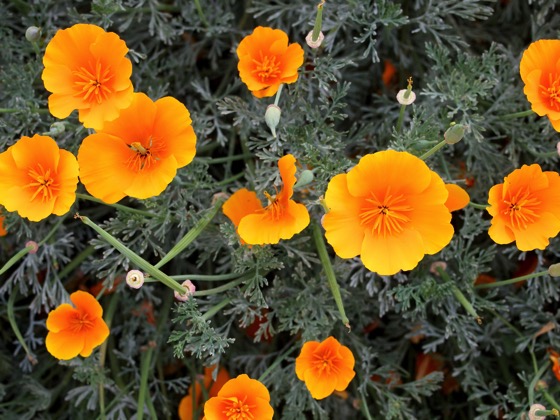Starting a series within a series, I will be highlighting shade plants that grow well underneath trees, especially California Live Oak. I have a deep shade area beneath many trees here in my own garden and i am constantly looking for plants that can help green this area. — Douglas
A wild and weird exotic looking plant that would bring interest to any garden. A surefire conversation starter among your friends and visitors. Interested in butterflies. Dutchman’s Pipe is the sole food source for the California pipevine swallowtail butterfly.
California Pipevine/California Dutchman’s Pipe (Aristolochia californica)
By No machine-readable author provided. Curtis Clark assumed (based on copyright claims). – No machine-readable source provided. Own work assumed (based on copyright claims)., CC BY-SA 2.5, https://commons.wikimedia.org/w/index.php?curid=716049
What are your thoughts on this Interesting Plant? Drop a note in the comments!
Aristolochia californica, the California pipevine or California Dutchman’s-pipe is a perennial woody vine of western North America.[1][2]
The vine is endemic to northern California.[3] It is native to the Sacramento Valley, northern Sierra Nevada foothills, San Francisco Bay Area, Northern Inner California Coast Ranges, southeastern Klamath Mountains.[1]
The plant grows along riparian streambank areas, in chaparral, oak woodland, and mixed evergreen forest habitats.[1][3][4] It is found below 700 metres (2,300 ft) in elevation.[3]
Aristolochia californica is a deciduous vine.[3] It grows from rhizomes, to a length usually around 5 feet (1.5 m), but can reach over 20 feet (6.1 m).[3] The twining trunk can become quite thick in circumference at maturity.
It sends out new green heart-shaped leaves after it blooms. The bloom period is January through April.[1]
The plant produces large green to pale brown curving pipe-shaped flowers, with purple veins and a yellow to red lining.[3] The U shaped flowers produce winged capsular green fruits.[3] — Wikipedia
More information on Aristolochia californica:
- Aristolochia californica on Wikipedia
- Aristolochia californica at Las Pilitas Nursery
- Aristolochia californica on Dave’s Garden



- Wild Ginger (Asarum caudatum)
- Begonia Rex (Painted-leaf begonia)
- Leonotis leonurus
- Matilija Poppy (Romneya)
- Melocactus matanzanus (Turk’s Cap Cactus)
- Coleus “Redhead”
- Tiarella ‘Pink Skyrocket’
- Bacopa monnieri (Water hyssop)
- Lycoris squamigera (Naked Lady Lily)
- Kong Coleus (Plectranthus/Solenostemon scutellarioides “Kong Series”)
- Crassula plegmatoides
- Agave victoriae-reginae
- Mountain Cornflower (Centaurea montana)
- Euphorbia ‘Black Bird’
- Firecracker vine (Ipomoea lobata)
- Eryngium yuccifolium
- Dahlia ‘Karma Choc’
- Echeveria Agavoides
- Jerusalem Sage (Phlomis fruticosa)
- Hummingbird Sage (Salvia spathacea)
- Seaside Daisy, Beach Aster (Erigeron glaucus)
- Toyon (Heteromeles arbutifolia)
- California Lilac (Ceanothus)
- Bigberry Manzanita (Arctostaphylos glauca)
- Douglas Iris (Iris douglasiana)
- Malva Rosa (Lavatera assurgentiflora)
- Baby Blue-Eyes (Nemophila)
- Coral Bells or Alum Root (Heuchera)
- Deer Grass (Muhlenbergia rigens)
- Echeveria ‘Lola’
- View all past “Interesting Plant” posts
Interesting Plant is a series from A Gardener’s Notebook blog and podcast that highlights the most interesting plants I find in my Internet and real-world travels — Douglas







